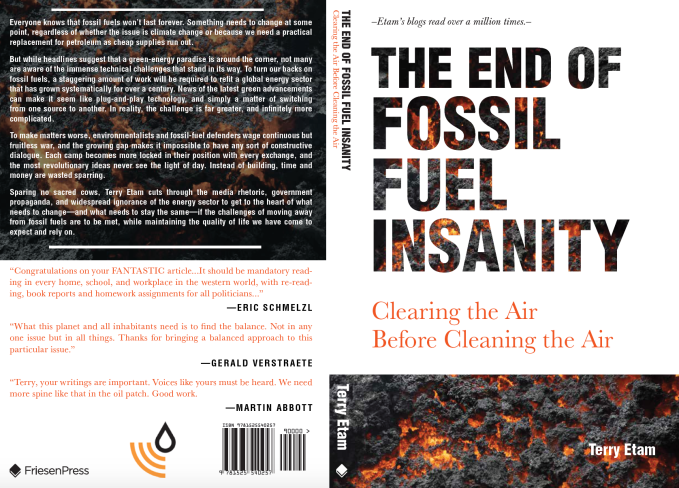Delusional, debt-addled governments risk implosion through impossibly expensive fossil-fuel reduction schemes that citizens fight & refuse to pay for. Welcome to Green New Deal logic

The economic world is in a bit of a shambles these days. Actually, not a bit of one – a complete one. It may look fine on the surface; despite trade war threats most economies are posting positive (albeit modest) growth numbers.
Under the surface though is near panic. The world’s largest economies are skittish; the US is running in circles, starting fires with trading partners, hugging/punching unhealthy global regimes like N Korea and Iran, all while Trump leans on the Fed to lower interest rates and yells at OPEC to lower oil prices to keep the wheels on the economy. China freaks out at the first sign of a slowing growth, and leaps in with remarkably nimbly applied stimulus packages.
The EU is a true basket case, with virtually every significant economy in the block sporting negative interest rates in order to spur growth (as is Japan). Canada is a hand-wringing mess, trying to please citizens and the UN simultaneously while lecturing the world on human rights issues, and failing miserably at all.
All this intrigue is simmering in two layers of trouble, ones that could cause complete meltdowns. The first is the world’s debt, which now exceeds $240 trillion. Some central banks have hung their hats on a demented scheme called Modern Monetary Theory which postulates that debt levels can rise indefinitely without harm as long as governments keep printing money. History has not been kind to dimwits that tried to operate in the past; a lot is being bet on the notion that it will work this time but it is a very big gamble.
The other layer of trouble arises from the push to renewable energy. In general, advances towards renewables have been wildly uneconomic and have only ever seen the light of day because of massive government subsidies. Think of the billions handed out by governments to get people to buy electric vehicles in the hopes that they will become so mainstream that everyone will buy them. After a decade of these expenditures, the needle has moved hardly at all, and the world consumes petroleum faster and harder than ever before. Trillions have gone into wind and solar power, and we consume more fossil fuels than ever, setting new records in 2018 for oil, coal and natural gas consumption.
The trouble is that because of the overpowering media barrage of climate change threats, warnings, and admonishments to panic, governments are now treating climate change-related expenditures as some sort of moral and existential imperative. They are acting like someone trying to get a stalled car started as it straddles some train tracks with a two-miler bearing down on it.
But despite the cacophony of climate change threats, we are seeing pushback by citizens who have had enough of being held responsible for theoretical musings about what future climate scenario might unfold. The yellow vest group in France was first and the most visible, but Australia also recently surprised with a vote against the green movement, as have various provinces in Canada. Much of the world is veering towards what is painted as “the right”, which is sort of true, except that it really isn’t. The yellow vesters in France were not archetypal right-wingers and ultra capitalists; they were simply citizens fed up with ever higher taxation to pay for relatively meaningless climate change gestures. Brazil went “right”, as did the US, the Philippines, and lately a lot of Europe. There are many reasons for this shift, from immigration issues to overly large government to whatever else socialists get up to. But one undeniable fact is that the general population is not viewing the green energy money pot as limitless, and they are describing in greater detail the lengths to which they will go to pay for a greener future. The overall answer is: not much.
Canadians answered that question, in fairly stark terms, in a recent poll. The results seemed to make perfect sense, because what the world feels was boiled down to a few crystal clear responses. Due to the massive media onslaught of climate fear-mongering, 38 percent of Canadians said that “our survival depends” on addressing climate change. However, 65 percent of Canadians were unwilling to pay more than $500 per year to fight climate change. Another poll in the US had remarkably similar findings; while nearly 70 percent of Americans wanted to see “urgent action” taken on climate change, only 34 percent were willing to incur costs of more than $100 per year to help save the planet from climate change. At the end of the day, economic realities trump theoretical issues at the individual level, no matter what people profess to fear.
To further drive home the point of the impossibility of brain-dead schemes like the Green New Deal, Reuters reported on a Woods Mackenzie study that estimated the cost of weaning the US power sector off fossil fuels would cost $4.7 trillion – nearly $2,000 per household per year for 20 years. Two-thirds of US citizens won’t cough up more than $100/yr. Note also that the $4.7 trillion estimate does not include any costs to stop fossil fuel usage in the transportation, agriculture, or manufacturing sectors. To “clean up” all those in 20 years would add another thousand or two to each citizen’s annual bill, but that is a moot point – they won’t even spend 50 cents a day.
That dichotomy is fascinating, and seems wholly realistic – a minority of people are shouting until their eyes bug out that we are doomed, while a majority says yeah but quit bugging me about it I’ve gotta go get groceries and pick up the kids. And these are the results we are seeing, more and more, in global elections. Fear works for a while; then when it doesn’t people choose lifestyle over theoretical concerns, every time.
This site is financially supported by no one, except possibly you, dear reader. Please consider a donation below or picking up a copy of “The End of Fossil Fuel Insanity” at Amazon.ca, Indigo.ca, or Amazon.com. Thank you!
Donations to keep this site free of influence and of ads gratefully accepted! In any multiple of $5. Thanks!
C$5.00

6 Comments
Excellent commentary, bravo.
LikeLike
Thank you!
LikeLike
We need more analysis from this point of view in popular journalism, it is prescient. But check the math or basis on the $4.7 trillion postulate & $2k per US citizen for 20 years. Seems the two sums differ by a large margin. 3x perhaps. Such apparent errors or mis-speaking detracts from the bonafides of the viewpoint expressed. And you need credibility to build a following. The lack of reason in voices you seek to counter, is aided if your analysis is unimpeachable. Attributing your sources less generically would help. And add verifiability. I’m not offended if you don’t post this, but you might acknowledge it by return, privately.
LikeLike
Valid criticism – I took the numbers from the Reuters article and assumed there was more to the calculation than meets the eye – such as the “per person” was for a select demographic group like taxpayers, etc. But point taken and thanks for the comment. I shall keep closer eye next time.
LikeLike
Anon, I’m back at the computer after a day off and reread the Reuters article. It is says $35,000 per household, not per person. THanks for the correction. I will update.
LikeLike
[…] Awash in debt, governments are mindlessly pouring trillions into green energy schemes that are not having a material impact on emissions reduction…and despite the cacophony of climate change threats, we are seeing pushback by citizens who have had enough of being held responsible for theoretical musings about what future climate scenario might unfold. Read on… […]
LikeLike